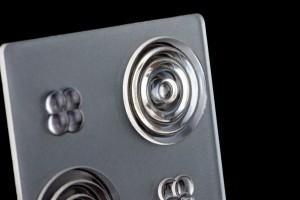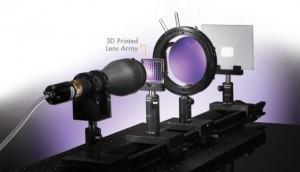 If you are a person of a particular vintage, you may recall the ads once placed in printed comic books and magazines for an outfit known as Edmund Scientific. It was, back in the day, a company which offered a nearly bewildering, but enticing, array of exceptional and inexpensive science goodies.
If you are a person of a particular vintage, you may recall the ads once placed in printed comic books and magazines for an outfit known as Edmund Scientific. It was, back in the day, a company which offered a nearly bewildering, but enticing, array of exceptional and inexpensive science goodies.
It was founded in 1942 by amateur photographer Norman W. Edmund who decided he could sell war-surplus optics and cheap scientific gadgets to a willing public, and his company was soon a favorite among hobbyists, amateur astronomers, high school students and science geeks of all stripe and age.
But the real core of the offerings came in the form of war surplus lenses with which, given the proper motivation and skills set, customers could build their own telescopes optical devices. For the $10 cost to buy a ten-lens kit and a booklet of plans, you were on your way.
Once the launch of the Russian satellite Sputnik lit a scientific fire under America, Edmund’s catalog became the go-to source for optical and mechanical parts for the many designs for telescopes of all sizes and configurations that the company provided.
Now Edmund Optics, the namesake and a premier provider of high-grade optical components has formed a working relationship with LUXeXceL Group BV to bring 3D printed plastic optics to the photonics industry.
Edmund Optics now offers a variety of 3D printed optics of their design, and this new deal means they’ll be 3D printed by LUXeXceL. Both companies say the performance of 3D printed lens arrays is a competitor for traditional glass molding.
“We’re always interested in offering new technologies for our customers to elevate their applications,” said Samuel Sadoulet, the President and COO of Edmund Optics. “Creating optics with LUXeXceL’s patented Printoptical Technology is a great advancement in the manufacture of 3D printed optics and we are thrilled to bring these components to the photonics industry. I am excited that this cooperation will make it easy for designers to prototype, fine-tune – and ultimately – perfect their designs, enabling the next generation of optically driven products.”
The Dutch LUXeXceL Group is the world’s first 3D printing service for optically transparent products, and their process uses a revolutionary additive manufacturing technique to build optical components such as micro structures, arrays, prisms, and freeform lenses. LUXeXceL say their 3D printed plastic optics are ideal for illumination, photovoltaic, and prototyping applications, and the company is a 2015 finalist for the prestigious Prism Awards.
“We look forward to our joint effort with Edmund Optics to bring 3D printed optics to the photonics industry,” says Richard van de Vrie, President of LUXeXceL. “They are well-respected for their market knowledge and have a long-standing history of excellence in optics.”
The companies says 3D printed optics have a variety of advantages over their more traditionally built counterparts. They require no upfront investment in molds, they can be created in complex geometries, no minimum quantities are required and designs can be easily improved through a number of production iterations.
According to the companies, 3D printed plastic optics are ideal for applications from photovoltaics like fresnel lenses, biometrics like micro optics, micro lens and lenticular arrays and they can also be created in sizes up to 380 mm x 200 mm to a thickness of 20 mm.
If you need more information, you can check out their respective websites at www.edmundoptics.com and www.luxexcel.com.
Do you remember the ads for Edmund Scientific in the back of comic books and The Scientific American? Have you ever used LUXeXceL Group optics? Let us know in the Edmund Optics And LUXeXceL forum thread on 3DPB.com.
Subscribe to Our Email Newsletter
Stay up-to-date on all the latest news from the 3D printing industry and receive information and offers from third party vendors.
You May Also Like
Precision at the Microscale: UK Researchers Advance Medical Devices with BMF’s 3D Printing Tech
University of Nottingham researchers are using Boston Micro Fabrication‘s (BMF) 3D printing technology to develop medical devices that improve compatibility with human tissue. Funded by a UK grant, this project...
3D Printing Webinar and Event Roundup: April 21, 2024
It’s another busy week of webinars and events, starting with Hannover Messe in Germany and continuing with Metalcasting Congress, Chinaplas, TechBlick’s Innovation Festival, and more. Stratasys continues its advanced training...
3D Printing Webinar and Event Roundup: March 17, 2024
It’s another busy week of webinars and events, including SALMED 2024 and AM Forum in Berlin. Stratasys continues its in-person training and is offering two webinars, ASTM is holding a...
3D Printed Micro Antenna is 15% Smaller and 6X Lighter
Horizon Microtechnologies has achieved success in creating a high-frequency D-Band horn antenna through micro 3D printing. However, this achievement did not rely solely on 3D printing; it involved a combination...
































